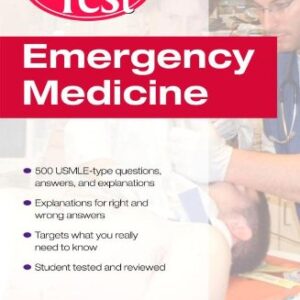Inherent to the teaching and practice of emergency medicine are specific challenges not found in other specialties – the unknowns of the emergency department, the need to identify life- and limb-threatening conditions, the pressure to solve problems and find solutions quickly, and the orchestration of clinical specialists and ancillary services.
Because of these unique demands, books written by clinicians from other disciplines, that extrapolate their information from other specialties, aren’t always suitable references for teachers of emergency medicine. This book is different – it shows how to incorporate effective teaching strategies into the unique teaching atmosphere of the emergency department, how to effectively lecture, lead small groups, give feedback, foster life-long faculty development skills, and much more – it is written by emergency medicine physicians for emergency medicine physicians.
Practical Teaching in Emergency Medicine gets to the essential core of how to best teach the art of practicing emergency medicine – and provides the blueprint to become a better teacher, providing guidance on how to accomplish skilful teaching in busy emergency departments. It provides emergency physicians and trainees with the necessary tools to effectively and efficiently transmit information to learners in the often times chaotic emergency department environment.
Content:
Chapter 1 Adult Learners in the Emergency Department (pages 1?15): Ellen J. O’Connell and Kurt C. Kleinschmidt
Chapter 2 Obstacles to Teaching in the Emergency Department (pages 16?23): Esther K. Choo and Jeffrey A. Tabas
Chapter 3 Teaching and Patient Care in Emergency Medicine (pages 24?32): Michael A. Bohrn and David A. Kramer
Chapter 4 Bedside Teaching in the Emergency Department (pages 33?47): Kevin G. Rodgers
Chapter 5 Teaching Procedures: Beyond ?see one, do one, teach one? (pages 48?59): Mercedes Torres and Siamak Moayedi
Chapter 6 Providing Feedback in the Emergency Department (pages 60?71): David A. Wald and Esther K. Choo
Chapter 7 The Computer as a Teaching Tool (pages 72?86): Joshua S. Broder
Chapter 8 Teaching the Intangibles: Professionalism and Interpersonal Skills/Communication (pages 87?102): David K. Zich and James G. Adams
Chapter 9 Teaching Medical Students (pages 103?113): David E. Manthey
Chapter 10 Teaching Trainees from Other Services in the Emergency Department (pages 114?124): Michelle Lin
Chapter 11 The Education of Resident Physicians in Emergency Medicine: A United States Perspective (pages 125?145): Stuart P. Swadron and William K. Mallon
Chapter 12 Teaching Physicians in Training How to Teach (pages 146?156): Carey D. Chisholm
Chapter 13 Characteristics of Great Teachers (pages 157?167): Jennifer Avegno and Peter M. C. Deblieux
Chapter 14 Effective Presentation Skills (pages 168?179): Joseph R. Lex
Chapter 15 Small group discussion skills (pages 180?191): Matthew D. Deibel and Mary Jo Wagner
Chapter 16 Faculty Development as a Guide for Becoming a Better Teacher (pages 192?209): Gloria J. Kuhn
Chapter 17 Strategies for Effective Clinical Emergency Department Teaching (pages 211?224): Glen Bandiera and Shirley Lee
Chapter 18 Pearls and Pitfalls in Teaching: What Works, What Doesn’t? (pages 225?233): Brian Clyne and David G. Lindquist






Reviews
There are no reviews yet.